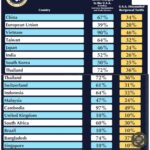MUMBAI: Lenders want the central bank to move back to the daily overnight borrowing window as the main cash management tool to help improve overall systemic liquidity – a prerequisite for quicker transmission of reductions in policy rates.
Bankers made this request to the Reserve Bank of India (RBI) during a meeting Thursday between officials at the central bank and mainstream lenders, people aware of the developments said.
The discussions revolved around the RBI’s liquidity management framework, which was rolled out in February 2020. Under this framework, the 14-day variable repo rate auction is the main tool for short-term liquidity management, while auctions with tenors ranging between overnight and up to 13 days are liquidity fine-tuning operations.
“What banks want is the predictability and assurance that they have a daily, on-tap borrowing window available,” said a senior banker aware of the discussions in the meeting. “Predicting liquidity requirements for a fortnight is tough given that payments systems are operational 24×7. In the case of large outflows, banks face issues in managing their liquidity. Effectively, the RBI has already moved to daily auctions. But changes to the liquidity framework will give banks some certainty.”
In January, the central bank announced it will conduct daily variable rate repo auctions on all working days, until further notice. This, along with RBI’s other interventions like open market operations, has helped improve the systemic liquidity, which was in deficit seen through the better part of the March quarter.
Bankers expect changes to the liquidity framework next week when the RBI will announce its bi-monthly rate decision on April 9. The central bank is widely expected to cut the repo rate by another 25 basis points. In February, RBI cut the repo rate interest rates for the first time in five years.
The liquidity is expected to be in surplus mode in April, and expecting this, banks have started to lower deposit rates. Banks have cut deposit rates by at least 25-40 basis points. A cut in deposit rates paves the way for a fall in the marginal cost of fund-based lending rates (MCLR).
Source: The Economic Times

 Indian Textile Exporters To Get An Edge Over Key Competitors
Indian Textile Exporters To Get An Edge Over Key Competitors 